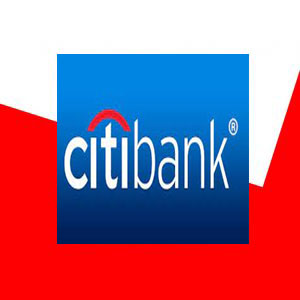Bank Login Credentials: How to Keep Your Financial Information Secure
In today’s digital age, online banking has become the norm. It provides convenience, but it also comes with risks, especially when it comes to your bank login credentials. These login credentials, such as your username and password, are your first line of defense against fraud and identity theft. This article will discuss how to protect your bank login credentials and what to do if they are compromised.

Introduction
Your bank login credentials are what you use to access your online banking account. They are unique to you and are used to authenticate your identity when you log in. It’s crucial to protect these login credentials as they allow you to access your financial information, including your account balance, transaction history, and personal details.
Bank login credentials, such as usernames and passwords, are used to access online banking services. They provide a secure way for account holders to manage their finances online from the comfort of their own homes. However, with the rise of cybercrime, it is essential to protect your bank login credentials from unauthorized access.
Best Selling Bank Logins
-
- USA bank Login
Chase Bank Login – USA
- $500.00 – $1,500.00
- Select options This product has multiple variants. The options may be chosen on the product page
-
- Canadian Bank Login
Citibank Logins – Canada
- $200.00 – $450.00
- Select options This product has multiple variants. The options may be chosen on the product page
-
- USA bank Login
KeyBank Login – USA
- $150.00 – $450.00
- Select options This product has multiple variants. The options may be chosen on the product page
-
- BANK LOGIN, USA bank Login
PNC Bank Login – USA
- $450.00 – $1,500.00
- Select options This product has multiple variants. The options may be chosen on the product page
These are the details we will give you for login and other purposes after you have bought bank account logins.
Username | Password | Security Questions | Answers | Email Access | Holder Name | Number Account | Bank Name | Phone Number | Address | Date | Mother Maiden’s Name | CVV2Username | Password | Security Questions | Answers | Email Access | Holder Name | Number Account | Bank Name | Phone Number | Address | Date | Mother Maiden’s Name | CVV2
What are Bank Login Credentials?
Your bank login credentials include your username, password, and any security questions or two-factor authentication methods that your bank requires. Your username is typically your email address or a unique identifier assigned by your bank. Your password is a combination of letters, numbers, and special characters that you create when you set up your account.
How Bank Login Credentials are Used
Bank login credentials are used to access online banking services, which allow account holders to manage their finances, such as checking account balances, transferring funds, paying bills, and applying for loans. The login credentials provide a secure way for account holders to access their account information from anywhere with an internet connection.
How to Protect Your Bank Login Credentials
Protecting your bank credentials is crucial to keeping your financial information secure. Here are some tips to help you protect your bank login credentials:
Create a Strong Password
Your password should be at least 12 characters long and include a mix of uppercase and lowercase letters, numbers, and special characters. Avoid using personal information, such as your name or birthdate, as part of your password.

Use Two-Factor Authentication
Two-factor authentication adds an extra layer of security to your account by requiring a second form of authentication, such as a text message or phone call, in addition to your login credentials.
Don’t Share Your Login Credentials
Never share your bank credentials with anyone, including family members or friends. Your bank will never ask you for your login credentials, so if someone asks for them, it’s a red flag.
Keep Your Devices Secure
Ensure that your devices are protected by up-to-date antivirus software and firewalls. Never leave your devices unattended in public places, and don’t access your account on public Wi-Fi networks.
Monitor Your Account
Check your account regularly for any unauthorized transactions or suspicious activity. If you notice anything unusual, contact your bank immediately.
What to Do If Your Bank Login Credentials are Compromised
If you suspect that your bank login credentials have been compromised, take the following steps:
Change Your Password Immediately
Log in to your account and change your password immediately. Choose a strong password that you haven’t used before.
Contact Your Bank
Contact your bank to report the incident and ask them to monitor your account for any suspicious activity.
Review Your Account History
Review your account history to ensure that there are no unauthorized transactions or changes made to your account.
Check Your Credit Reports
Check your credit reports for any suspicious activity. You’re entitled to one free credit report from each of the three major credit bureaus each year.
Report Identity Theft
If you suspect that your identity has been stolen, contact the Federal Trade Commission (FTC) and your local law enforcement agency.
Don’t Know How to Use Bank Logins? Buy Instant Money Transfer Services

FAQs
What should I do if I suspect my bank login credentials have been compromised?
Change your passwords immediately and enable two-factor authentication. Contact your bank and report any suspicious activity.
Can my bank login credentials be stolen through phishing emails?
Yes, phishing emails are a common way for hackers to steal login credentials. Be cautious of emails that ask for your login credentials or contain suspicious links.
Is it safe to store my bank login credentials on my computer?
No, it is not safe to store your bank credentials on your computer. Use secure methods to store your passwords, such as a password manager or encrypted document.
How often should I change my bank login credentials?
It is recommended to change your bank login credentials at least once every six months to reduce the risk of unauthorized access.
Can I use the same password for multiple accounts?
No, it is not recommended to use the same password for multiple accounts. Use unique passwords for each account to reduce the risk of unauthorized access.
Conclusion
Login credentials provide a secure way for account holders to manage their finances online. However, with the rise of cybercrime, it is important to take precautions to protect your bank credentials from unauthorized access. By using strong passwords, enabling two-factor authentication, keeping your credentials secure, and monitoring your accounts, you can reduce the risk of becoming a victim.
Your bank credentials are crucial to keeping your financial information secure. It’s important to take steps to protect them, such as creating strong passwords, using two-factor authentication, and monitoring your account regularly. If your bank credentials are compromised, take immediate action to protect your account and report the incident to your bank and the authorities. By being vigilant and proactive, you can help keep your financial information safe.
Buy Instant Bank Money Transfer Services
Contact
We are always available to take your orders 24/7. CONTACT US









